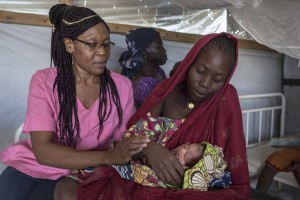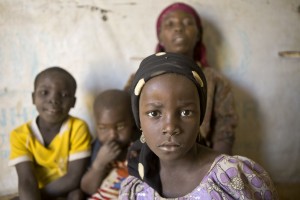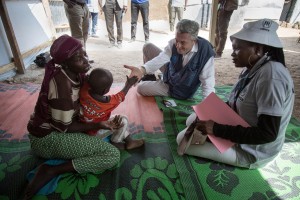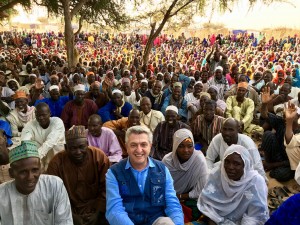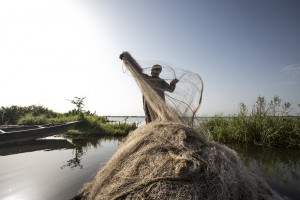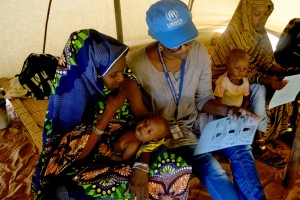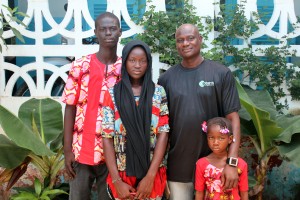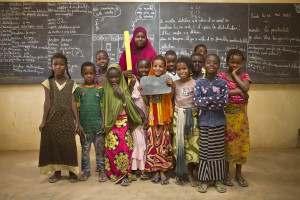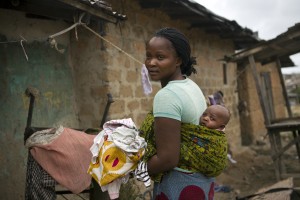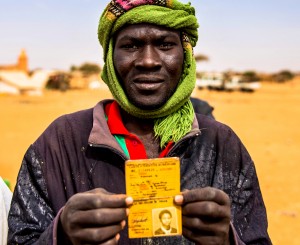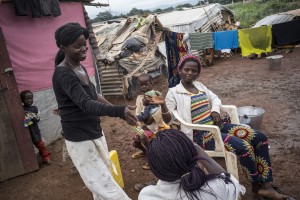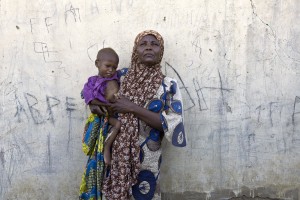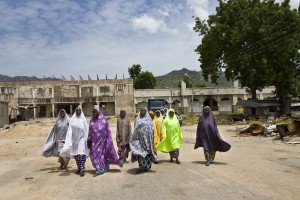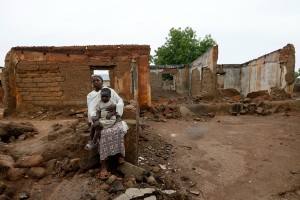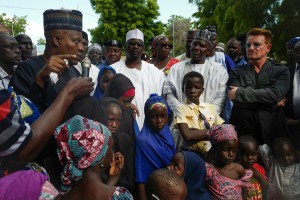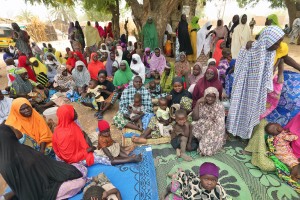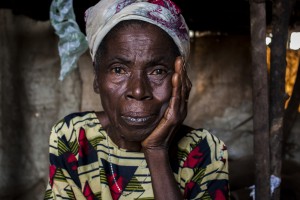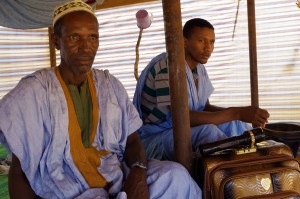Nigerian refugees in the Diffa region seek security and a better future in camp
Relocation from sites along Route nationale 1 to Sayam Forage has resumed after weeks of interruption due to Boko Haram violence
DIFFA, NIGER, 15 July 2016 (UNHCR) – The voluntary relocation of Nigerian refugees to Sayam Forage refugee camp just resumed in the Diffa region, after weeks of interruption linked to the degradation of the security situation in May and June. Refugees are departing from the site of Garin Wanzam located on the eastern part of Route Nationale 1, which is the main road in the area which runs parallel with the Nigerian border and the Lake Chad.
The voluntary relocation process is a key priority for UNHCR and the Niger authorities. The Governor of the Diffa region, Mr Dan Dano Mahamadou Laoualy, travelled last week to attend the departure of a first convoy transporting 225 people to Sayam Forage refugee camp located 140 kilometers from Garin Wanzam and 50 kilometers from the border with Nigeria. A second convoy with 167 people on board UNHCR trucks left on Tuesday this week, while a third convoy is scheduled today (Friday 15th). Further relocations from other sites such as Kindjandi, N’Gagam and Gagamari are also planned and up to 15,000 people may be relocated to the camp in the coming months.
An estimated 157,000 Nigerian refugees, returnees and internally displaced persons have settled in makeshift shelters in some 135 sites along Route Nationale 1 in the past year, after fleeing Boko Haram attacks in north-eastern Nigeria as well as in Niger’s Diffa region, while the total number of displaced in the region is estimated to be close to 300,000.
Relocations which were ongoing in May from Gagamari site to Sayam Forage were suspended following the violent attacks by Boko Haram fighters in Yebi village and Bosso town at the beginning of June. It is estimated that almost 70,000 people fled the attacks at that time and found refuge in spontaneous sites along Route Nationale 1, as well as in Diffa and Zinder towns. Refugees say they wish to be relocated to Sayam Forage as they feel they are exposed to constant insecurity by staying near the Nigeria border.
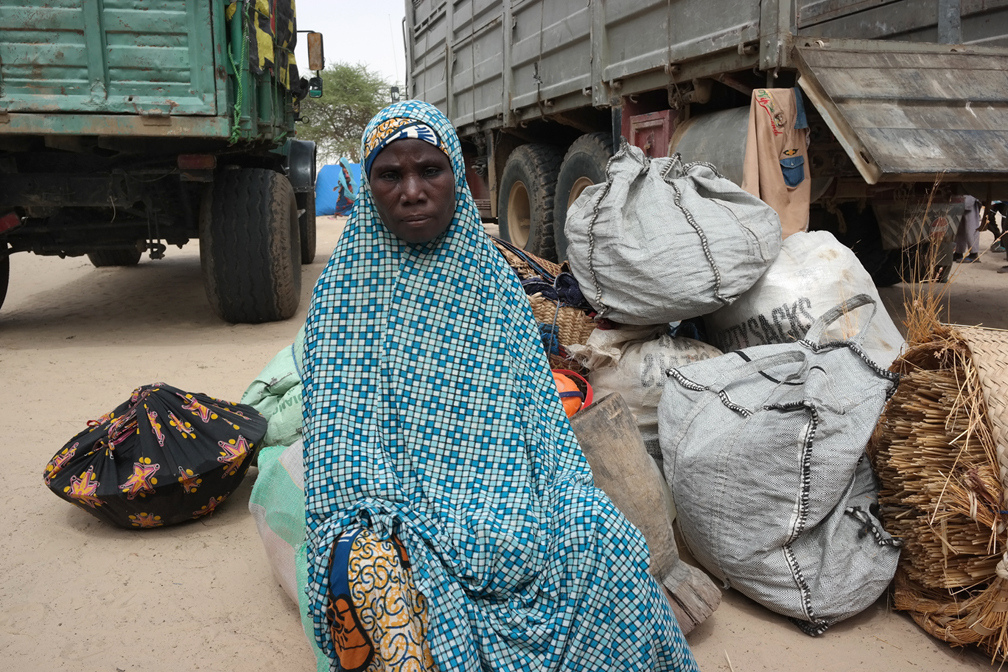
A Nigerian refugee woman awaits with her luggage to be transported from Garin Wanzam site to Sayam Forage camp. © UNHCR / Ibrahim Abdou
“We are leaving to the camp because we have suffered enough, this has to stop” laments Mahamadou Rabi, a Nigerian who had fled his country because of Boko Haram violence. Mahamadou had found refuge in Bosso, but had to flee again when the town was attacked in June. “We feel we will be safer in the camp, and we will be free at least from the persecutions of the insurgents. Here in Garim Wanzam site, we are forced to walk kilometers and kilometers just to find enough food for our children, just to survive”.
“We have been on the move for the past two and a half years”
Fassouma Ibrahim, a young mother of 6 children, feels the same way. “With the insecurity in northern Nigeria caused by Boko Haram, we were forced into exile in Niger and found refuge at the site of Yebi, near Bosso” she explains. “We lived in peace there for almost a year but then Yebi was attacked by Boko Haram men who crossed the border in early June. Our houses were burned that night and we were forced to flee to Bosso town. Less than 48 hours later, Boko Haram attacked the town. So the next day we fled with everyone else towards Diffa town. This has been an exhausting journey for us: we have been on the move for the past two and a half years”.
Since the opening of Sayam Forage camp on the 30 December 2014, very few refugee families made the choice to move there. “The camp is located in a remote area, and most people prefer to be self-reliant, which is not possible yet in this camp” explains Mahamadou Guide Amadou, head of UNHCR Field Office in Diffa. Additionally, while the majority of the displaced people were initially welcomed into the homes of host families, those very families have no more space nor financial resources to accommodate new arrivals.
Refugees are choosing to move to the camp now as a result of the continuous deterioration of the security, economic and humanitarian situations in the region. A wide-spread awareness campaign on the protection services and assistance which are available in the camp, as well as on refugee identification and registration, are also part of the relocation process. In parallel, basic services such as the provision of drinking water and basic hygiene facilities in Sayam Forage camp are being strengthened in order to absorb the additional new populations. There are currently over 4,000 refugees living in Sayam Forage which has a maximum capacity for 20,000 people.
With regular new displacements and relocation movements, the population of the camp will continue to grow in 2016, which requires significant human and financial resources in order to meet the minimum standards in terms of protection and assistance. UNHCR and humanitarian partners required over $USD112 million for the overall response in the Diffa region. However, to date, just 25% of this amount has been received.
Despite the increased interest in relocating to the camp, many refugees still choose to remain outside of the camp. The camp can only currently provide assistance and protection to Nigerian refugees, whilst returnees and entire villages of internally displaced people are gathering at spontaneous sites along Route Nationale 1. Nigerian refugees moving to Sayam Forage camp will at least feel safer and enjoy some stability following the multiple traumatic experiences that most have suffered in the past 3 years. “The two most important things for me today are simply to live in peace and the future of my children” says Fassouma.
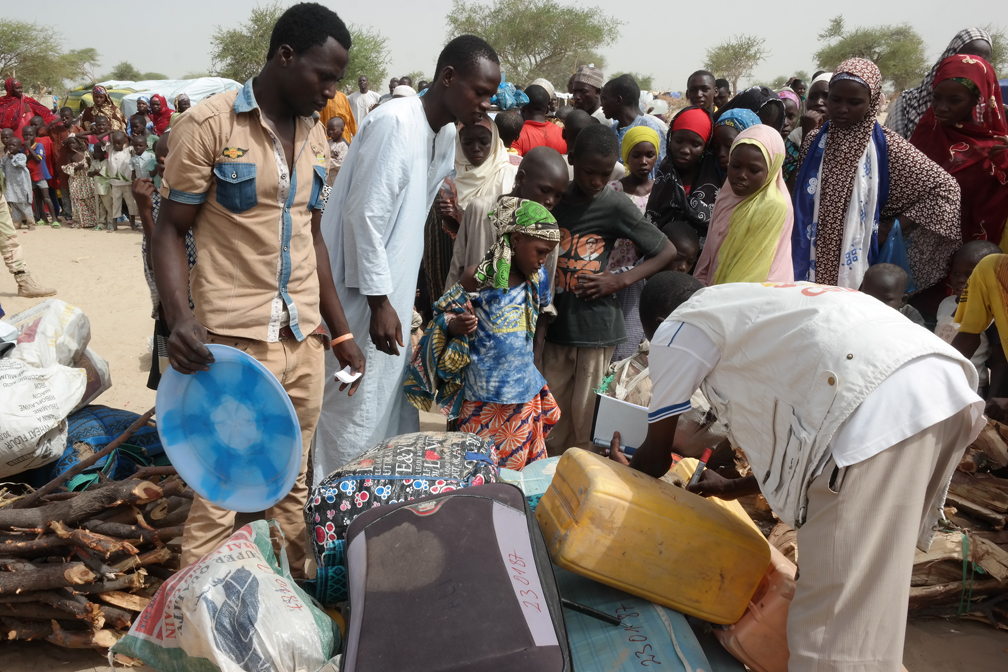
Nigerian refugees prepare their luggage in Garin Wanzam site with the help of aid workers before traveling in convoy to Sayam Forage refugee camp. © UNHCR / Ibrahim Abdou
